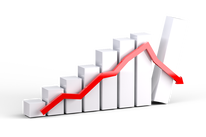 If it walks like a duck...
If it walks like a duck... We all know the duck test. There are variations, but it typically goes something like this: If it walks like a duck, quacks like a duck, and swims like a duck, then it’s probably a duck.
So, if it walks like a recession, quacks like a recession, etc., is it a recession? Well maybe, maybe not.








 RSS Feed
RSS Feed